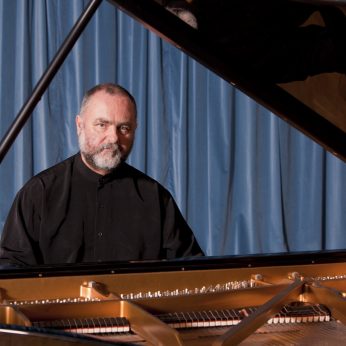Composer: Johann Sebastian Bach (b. 1685 - d. 1750)
Performance date: 02/07/2022
Venue: St. Brendan’s Church
Composition Year: 1722
Duration: 00:55:28
Recording Engineer: Simon Cullen, Ergodos
Instrumentation: hrp
Artists:
Malcolm Proud -
[harpsichord]

Johann Sebastian Bach [1680-1750]
The Well-Tempered Klavier Book 1 Part 2 BWV 858-869
| 1. Prelude and Fugue in F sharp major | 7. Prelude and Fugue in A major |
| 2. Prelude and Fugue in F sharp minor | 8. Prelude and Fugue in A minor |
| 3. Prelude and Fugue in G major | 9. Prelude and Fugue in B flat major |
| 4. Prelude and Fugue in G minor | 10. Prelude and Fugue in B flat minor |
| 5. Prelude and Fugue in A flat major | 11. Prelude and Fugue in B major |
| 6. Prelude and Fugue in G sharp minor | 12. Prelude and Fugue in B minor |
Before The Well-Tempered Klavier, written in 1722, whilst Bach was the Kapellmeister at Cöthen, it was commonly accepted that music could not be written in every musical key. Keyboard instruments were usually tempered with some notes in tune whilst others were left untuned. Bach advocated small tuning adjustments so that music written in every key would sit easy on the ear, which is something we take for granted today.
Arranged in pairs according to their key signature, the Fugues are often more complex and demanding than the Preludes they partner. Although Liszt played them on the grand piano, the music’s heart is conveyed by using the instruments of Bach’s time as this allows for a more faithful experience.
In this concert, Malcolm Proud continues his traversal of The Well-Tempered Klavier with the latter twelve preludes and fugues in Book 1, which he plays on the harpsichord and chamber organ.
Despite darker moments, the F sharp major Prelude is predominantly light; its partner Fugue is gentle and utilises three voices played simultaneously. F sharp minor’s Prelude has irrepressible energy, whilst the Fugue has a captivating, lyrical beauty. Upon reaching the key of G major, the performer can fully display their technique in the Prelude. The Fugue, though bloated with notes, is elegantly witty. The trills of G minor’s Prelude may be more suited to the violin, yet they are an effective left-hand exercise. The Fugue may be played solemnly or with some drive, both can prove equally effective.
A flat major’s Prelude possesses elegant poise; Germans often refer to the Fugue as the ‘Cathedral Fugue’ such is the feeling of spacious architecture evoked by its textured chords. The G sharp minor Prelude uses every keyboard register sensitively, whilst the Fugue provides a brusquely-written contrast. The A major Prelude’s innocence is countered by the quirky and complex Fugue. Hubert Parry called it an unattractive, comparative failure, but this misses the point of Bach’s ingenious writing. Whilst the A minor Prelude comprises of ornamented chords, the Fugue sounds as if it belongs to an earlier, more formal age with its harmonics and rhythms.
The B flat major Prelude is a fantasy-style toccata, whilst the Fugue is a contrasting counterpoint-laden caprice. B flat minor’s meditative Prelude is nothing compared to the intricacies of the five voices that comprise the Fugue. B major is conveyed through an undramatic, melodious Prelude, whilst the Fugue has a classical feeling. Arriving at B minor, we reach the Book’s conclusion. The Prelude alludes to the Italianate style of Arcangelo Corelli. The Fugue also hints to Italian inspiration, yet the music is unmistakably Bach’s own.
© Evan Dickerson
Copyright © 2024 West Cork Music. All rights reserved.
Designed and developed by Matrix Internet